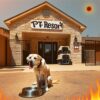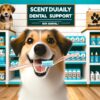- Empty cart.
- Continue Shopping
Safety Measures for Dog Care

When it comes to taking care of our furry friends, ensuring their safety is paramount. Dogs, with their playful and curious nature, often find themselves in situations that can be hazardous. Implementing proper safety measures can help prevent accidents and keep your dog healthy and happy. In this article, we’ll explore essential safety tips for dog care.
1. Home Safety
Secure Hazardous Items: Just like with small children, it’s crucial to keep dangerous items out of your dog’s reach. This includes chemicals, medications, sharp objects, and small items that could be swallowed. Store these items in high cabinets or locked drawers.
Safe Zones: Create safe zones in your home where your dog can play and relax without risk. Use baby gates to restrict access to certain areas, such as the kitchen or stairs. Ensure these zones are free from small objects and electrical cords that your dog might chew on.
Temperature Control: Dogs can suffer from both heatstroke and hypothermia. Ensure your home is adequately ventilated in summer and heated in winter. Never leave your dog in a car unattended, as temperatures can quickly become extreme.
2. Outdoor Safety
Fencing: Ensure your yard is securely fenced to prevent your dog from wandering off and encountering traffic or other dangers. Check for gaps or weak spots in the fence regularly.
Leash and Harness: Always use a leash and harness when walking your dog. Even the most well-trained dogs can get spooked and run into dangerous situations. A harness is often safer and more comfortable than a collar.
Identify and Avoid Hazards: Be aware of common outdoor hazards, such as toxic plants, sharp objects, and bodies of water. Keep your dog away from areas treated with pesticides or fertilizers.
3. Health and Wellness
Regular Vet Visits: Schedule regular check-ups with your vet to ensure your dog is in good health. Vaccinations, parasite control, and dental care are essential aspects of your dog’s health regimen.
First Aid Kit: Have a dog-specific first aid kit at home and know basic first aid procedures. This can be crucial in case of minor injuries or emergencies.
Healthy Diet: Provide a balanced diet appropriate for your dog’s age, size, and health condition. Avoid giving your dog human foods that can be toxic, such as chocolate, grapes, and onions.
4. Training and Socialization
Obedience Training: Teaching your dog basic commands such as sit, stay, and come can prevent dangerous situations. A well-trained dog is less likely to bolt into traffic or eat something harmful.
Socialization: Properly socialized dogs are less likely to be fearful or aggressive in new situations. Expose your dog to different environments, people, and other animals in a controlled manner.
5. Travel Safety
Car Safety: When traveling by car, always secure your dog with a harness or a travel crate. This prevents them from distracting the driver and reduces the risk of injury in case of an accident.
Identification: Ensure your dog has proper identification, such as a collar with tags and a microchip. This increases the chances of being reunited with your dog if they get lost.
By incorporating these safety measures into your dog care routine, you can create a safer environment for your furry friend. Prevention is always better than cure, and a little effort in ensuring safety can go a long way in keeping your dog healthy and happy.




























[…] victim, an 80-year-old grandfather, was taking his routine evening walk with his […]